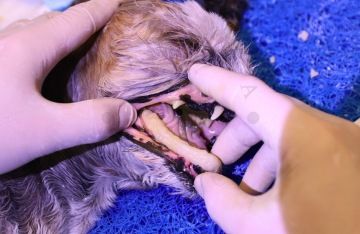Jaw fractures in dogs and cats
Professional Dental Consultation
The first step before any dental procedure with us is always a professional dental consultation, also known as a dental examination. Without this, we are unable to determine the type, extent, or cost of the necessary dental or dental surgical procedure. We strive to approach our clients transparently to ensure that it is entirely clear what needs to be done and how much it will cost.
The price for a professional dental consultation is 940 CZK.
Jaw fractures are relatively common injuries in dogs and cats, typically resulting from trauma. The most common causes include car accidents, falls from heights, bites from other animals, or blunt force impacts. Fractures can affect either the upper jaw (maxilla) or the lower jaw (mandible).
Location and Pain
Jaw fractures most frequently occur in the lower jaw, particularly in the front part where the teeth are located. This type of fracture is very painful because the jaw is a highly innervated area, and any movement or pressure can cause significant discomfort.
Recognizing a Jaw Fracture
Symptoms of a jaw fracture include:
Pain: The animal shows pain when opening its mouth, eating, or drinking.
Inability to close the mouth: The jaw may hang loosely or move abnormally.
Jaw deformity: Visible asymmetry or irregularities in the jawline.
Bleeding: Blood may be present in the mouth.
Loss of appetite: The animal may refuse to eat or drink due to pain.
Drooling: Increased saliva production or drooling due to the inability to close the mouth normally.
Treatment of Jaw Fractures
The treatment of a jaw fracture depends on the severity and type of fracture. Common therapeutic procedures include intraoral splinting and interdental wiring.
Intraoral Splinting
Intraoral splinting involves the use of acrylic resin to fix the jaw. This material is applied directly to the teeth and jawbone, providing stable support and allowing healing. The advantage of this method is that it is less invasive and often does not require surgical intervention.
Interdental Wiring
Interdental wiring is another method of stabilizing a fractured jaw, using wires to connect the teeth and stabilize the jaw. The wires are placed between the teeth and tightened to hold the fractured parts of the jaw in place until healing occurs. This procedure can be combined with acrylic splinting for increased stability.








